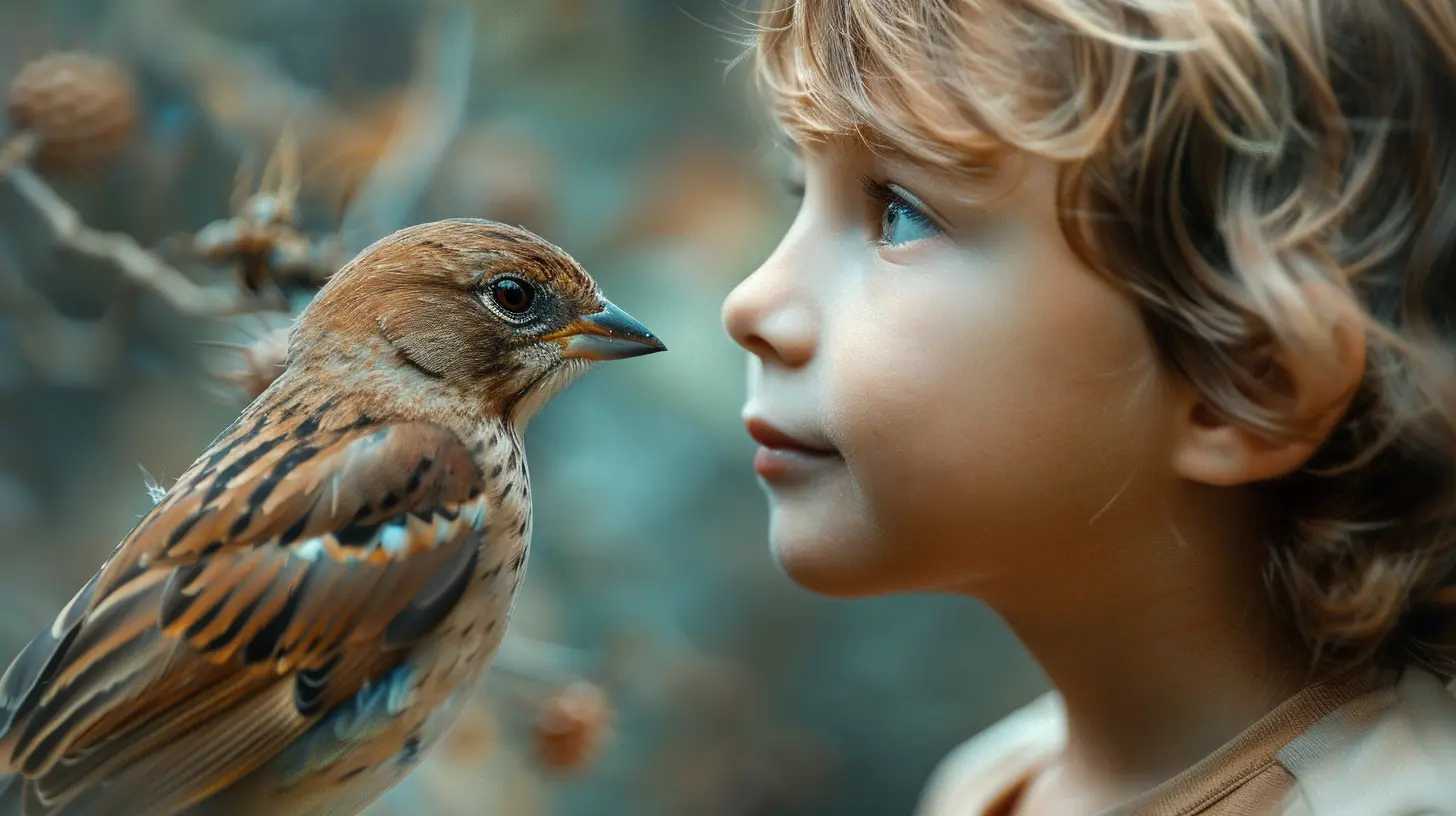Cultivating Empathy in Your Child Through Positive Reinforcement
8 October 2025
Raising a kind, compassionate, and empathetic child isn’t just a “nice-to-have” anymore—it’s essential. In a world where stress, competition, and digital distractions are constantly buzzing around us, empathy is the glue that holds our relationships together.
But how do you actually teach empathy? It’s not something you can spoon-feed like mashed bananas. Children learn through what they see, hear, and feel over and over again. That’s where positive reinforcement comes in. Yep, the same tool you use to potty-train or teach good table manners can also be a secret weapon in raising emotionally intelligent, empathetic humans.
So grab a coffee or tea, and let’s walk through how you can shape your child’s heart and mind with compassion—using encouragement rather than punishment.
Why Is Empathy Important In the First Place?
Empathy isn’t just about being “nice.” It’s about feeling with someone else—understanding their perspective, emotions, and experiences.Imagine your child sees a classmate crying at recess. An empathetic response would be offering a tissue, sitting next to them, or asking what’s wrong. That child is connecting. They’re tuned in. And down the road? That same emotional radar helps them build stronger friendships, handle conflict better, and become a more trustworthy adult.
So yeah—empathy is kind of a big deal.
What Is Positive Reinforcement?
Okay, quick psychology flashback: positive reinforcement means adding something pleasant immediately after a desired behavior, to make that behavior more likely to happen again.So, when your child does something kind or understanding, you point it out, praise it, or reward it. That’s reinforcing the behavior in a positive way, instead of punishing when they miss the mark.
This can be as simple as a smile, a high-five, or saying something like, “That was really thoughtful of you!”
It’s like putting water on a plant. Do it often and consistently, and boom—you’re growing empathy right at home.
The Connection Between Empathy and Reinforcement
Kids are like little sponges. They absorb language, habits, and—yes—values, especially if those things come with rewards, attention, or approval.So, when you highlight kind and empathetic behavior, you let your child know that what they did matters. And let’s be real—kids want our attention. Recognition becomes its own reward.
Over time, with regular positive reinforcement, being empathetic becomes second nature to them. Like riding a bike...but a bike that runs on kindness.
Practical Tips To Cultivate Empathy Through Positive Reinforcement
Alright, you’re sold on the “why” and “how.” Now let’s get into the juicy part—what to say, what to do, and how to make it all stick.Here’s a toolkit of everyday strategies you can start using like, today.
1. Praise Empathetic Behavior on the Spot
Catch those sweet moments like fireflies.When your child shares their toy without being asked or comforts a sibling in distress—say something!
🔹 “I noticed how you helped Emma when she dropped her toy. That was really kind.”
🔹 “You asked Ben if he was okay after he tripped—wow, that shows you care about others!”
The more specific you are in your praise, the more your child understands exactly what they did right.
2. Use Encouragement Over Discipline
Instead of saying what not to do, try reframing it to what they should do.Swap this:
❌ “Don’t be mean!”
With this:
✅ “Let’s try using kind words when we’re upset.”
It takes the sting out of correction and gently redirects them toward empathy.
3. Model It Every Day
Here’s the hard truth: kids are always watching. You can’t preach empathy on Monday and honk at every driver on Tuesday.Use your everyday actions to show what empathy looks like:
- Apologize when you’re wrong.
- Ask your child how their day was—and truly listen.
- Show compassion to others, whether it's helping a neighbor or comforting a friend.
Monkey see, monkey do, remember?
4. Create an “Empathy Jar”
This one’s fun and effective. Grab a mason jar and some colorful paper strips.Every time your child does something empathetic, write it down and drop it in the jar. At the end of the week, read the notes back with them.
Not only does it reinforce kind behavior, it also builds emotional awareness. They’ll start recognizing their own good deeds (and feel proud of them).
5. Read Books That Teach Empathy
Books are empathy machines disguised as bedtime stories. They pull kids into another person's shoes.Here are a few great picks:
- The Invisible Boy by Trudy Ludwig
- Have You Filled a Bucket Today? by Carol McCloud
- Last Stop on Market Street by Matt de la Peña
After reading, ask open-ended questions:
- “How do you think the character felt?”
- “What would you have done if you were them?”
This helps kids think deeper and connect emotionally with others.
6. Reinforce Through Role Play
Turn everyday situations into empathy lessons through pretend play.“Let’s pretend your friend fell and everyone laughed. What could you do?”
Or…
“What if your classmate forgot their lunch—how would you feel?”
Role play gives your child a chance to practice empathy in a low-pressure setting.
7. Celebrate Effort, Not Just Results
Empathy isn’t always clean or perfect. Sometimes your kid tries to be kind but fumbles.Maybe they offer a hug when the other child didn’t want one. Celebrate the effort, not just the outcome.
Say something like:
“I love that you wanted to help. That shows you care about others.”
That way, they won’t be afraid to try again.
Common Roadblocks (and How To Handle Them)
Even with all the best intentions, sometimes things don’t go smoothly. That’s okay! Here’s how to handle common hiccups along the empathy journey.“My kid just doesn’t seem to care.”
Sometimes it’s not a lack of empathy—it’s a lack of awareness. Try breaking down emotional situations into bite-sized pieces.Use simple explanations:
“When Sarah is crying, it means she’s sad. What can we do to help someone who’s sad?”
Over time, with the right prompts, they’ll start to pick up on emotional cues.
“They act sweet at home but not at school.”
Ah, the classic split-personality issue. Try checking in with teachers about what’s happening. Then talk to your child non-judgmentally about it.Ask questions like:
“What do you think was hard about that situation?”
“How do you think your friend felt?”
Use home as the practice ground, and with consistency, those behaviors will travel to school too.
“They’re kind only when being watched.”
Hey, it’s a start! At least they know what empathy is—now it’s about internalizing it.Keep reinforcing it naturally. Eventually, compassion will be their default, not just a performance.
Empathy Isn’t A One-Time Lesson—It’s A Lifelong Skill
Think of empathy like a muscle. Your child won’t flex it perfectly right away, but with consistent encouragement, it gets stronger.The good news? Every loving moment, every gentle correction, every “Hey, that was really thoughtful of you”—it all adds up.
Your child will slowly start understanding that their actions impact others. That their words matter. And that being kind isn’t just about getting praise—it feels good in its own right.
Final Thoughts: Keep It Real and Keep It Going
We don’t need to raise perfect kids. What we need are kids who try. Who care. Who sometimes mess up and say sorry. Who show up for others, even if it’s awkward or hard.Empathy is not just a gift—it’s a practice. And through positive reinforcement, you are making that practice part of your child’s daily rhythm.
So next time your kid offers their snack or comforts a friend or just asks how someone feels—don’t let it slide by. Make it a big deal.
Those small, sweet moments? They’re how we raise big-hearted humans.
all images in this post were generated using AI tools
Category:
Positive ParentingAuthor:

Liam Huffman
Discussion
rate this article
1 comments
Zinn McPhee
This article brilliantly highlights the importance of positive reinforcement in nurturing empathy. By celebrating compassionate behaviors, parents can foster emotional intelligence and kindness in their children, paving the way for thoughtful interactions and deeper connections in their future relationships. Great insights!
October 24, 2025 at 3:08 PM

Liam Huffman
Thank you for your thoughtful comment! I'm glad you found the insights on positive reinforcement valuable in fostering empathy and emotional intelligence in children.


